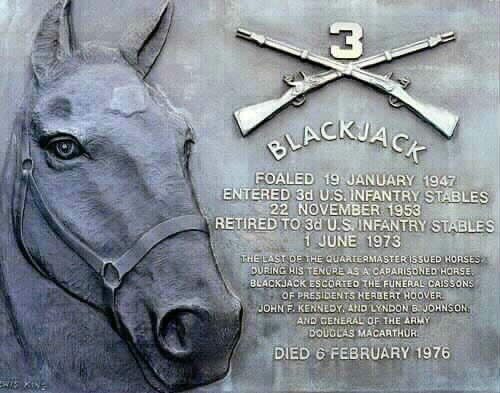Today is Memorial Day in the US, a day for honoring those who have served in the military and remembering those who have lost their lives.
Humans and their counterparts across the world have played incredible roles in military service throughout history, from falcons to horses. From active duty on the battlefield to the shaping traditions, horses in particular are incredible partners. Black Jack (1947-1976) is one such contributor to American military traditions.
 Photo by Ron Williams.
Photo by Ron Williams.
Since the times of Genghis Khan back in 1227 and earlier, the image of the “riderless horse” in a funeral procession, with a pair of empty boots facing backwards in the stirrup irons has symbolized a rider’s last journey as he or she looks back on loved ones. Black Jack himself contributed to upholding this tradition in American military funeral processions. A member of the Caisson Platoon in the 3rd US Infantry Regiment (the “Old Guard,” dating back to 1784), he served as the riderless horse in over 1,000 military funerals.
Black Jack got his start as he essentially did not want to be ridden. He was incredibly striking in both looks and gaits, but anyone who tried to ride him while he was being broken out and continuing through his (attempted) ridden career was quickly thrown off. One could say that he chose his memorable role himself.
 Photo by Ron Williams.
Photo by Ron Williams.
Major funerals that Black Jack served as the “riderless horse” include those for Herbert Hoover, Lyndon B. Johnson, General Douglas MacArthur, and President John F. Kennedy. He was purchased by First Lady Jacqueline Kennedy in 1973 and was finally laid to rest after 29 years of military service in Fort Meyer, VA. He holds full military honors in recognition of his service.
Thank you to all who have served or are currently serving in the military.
